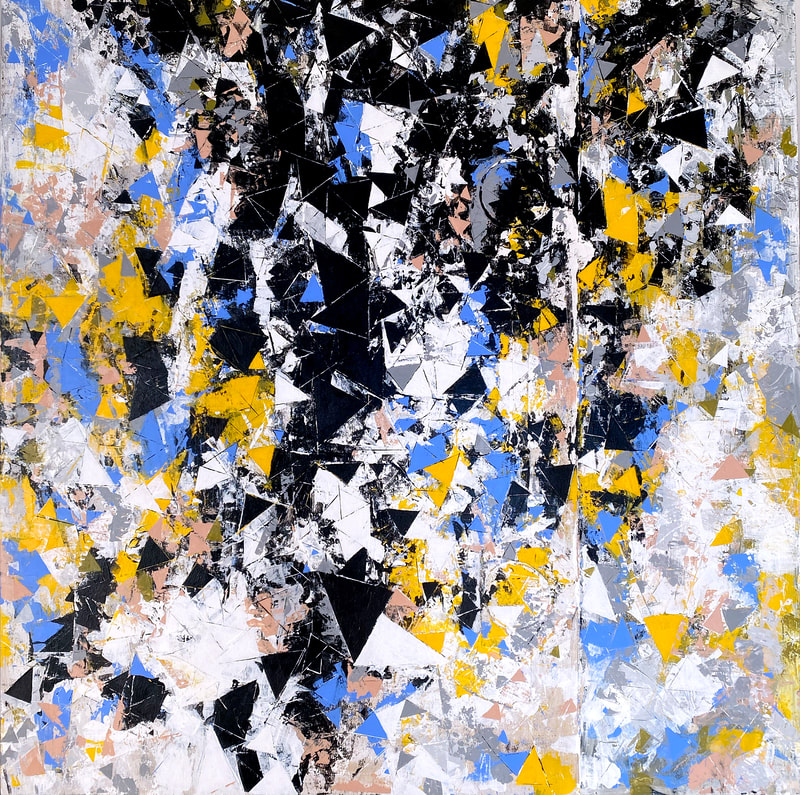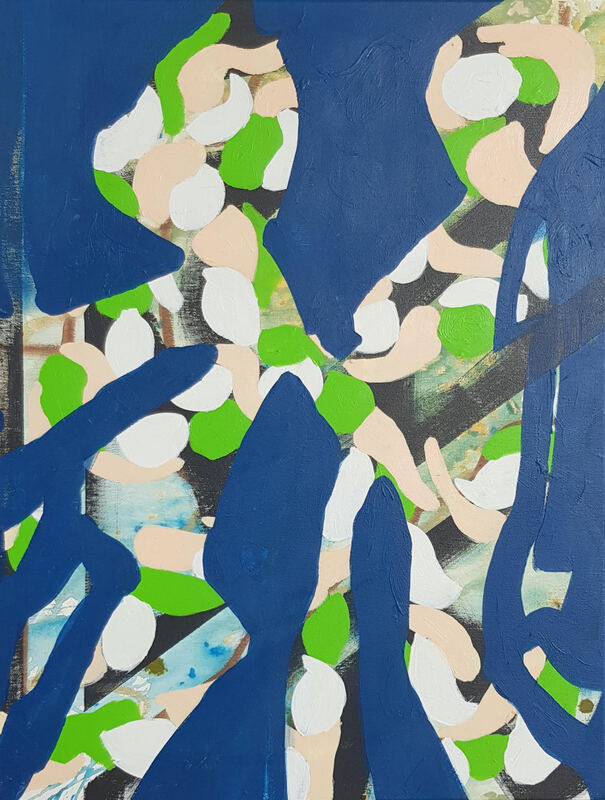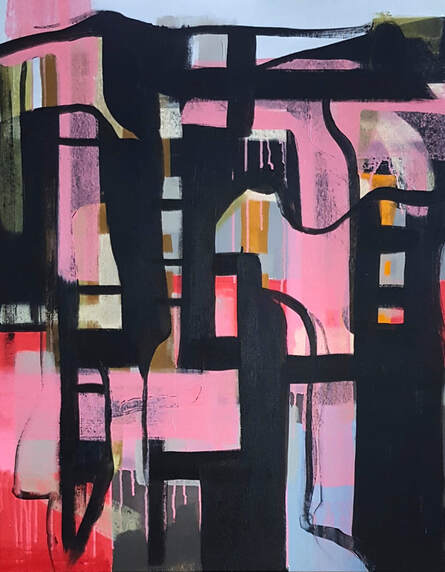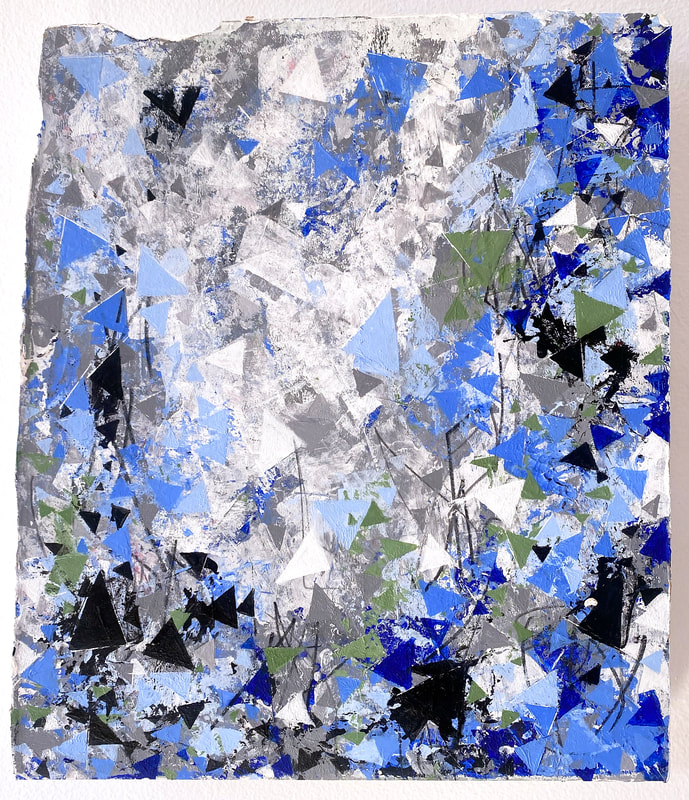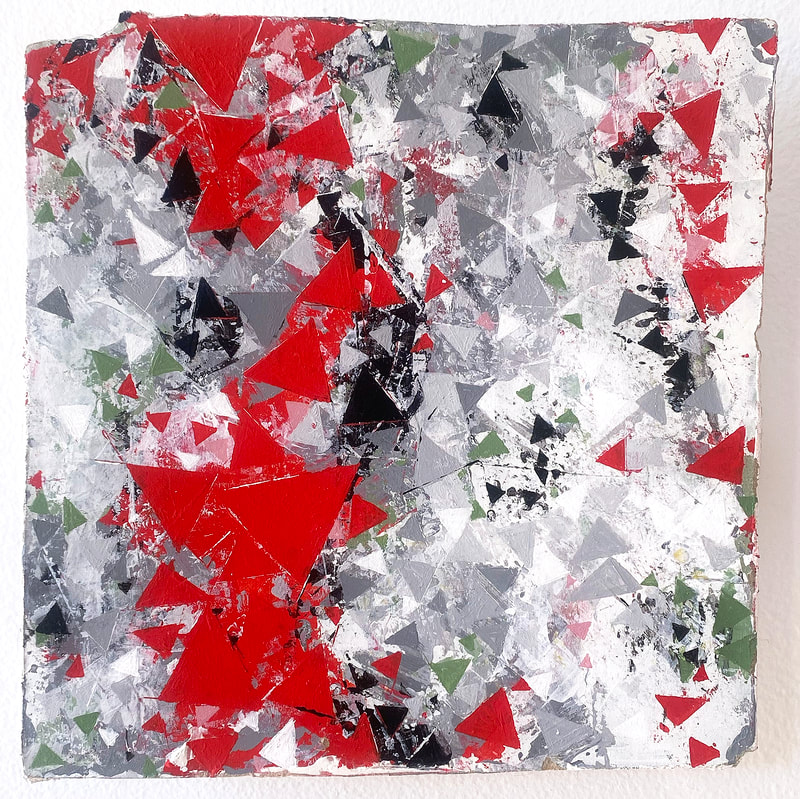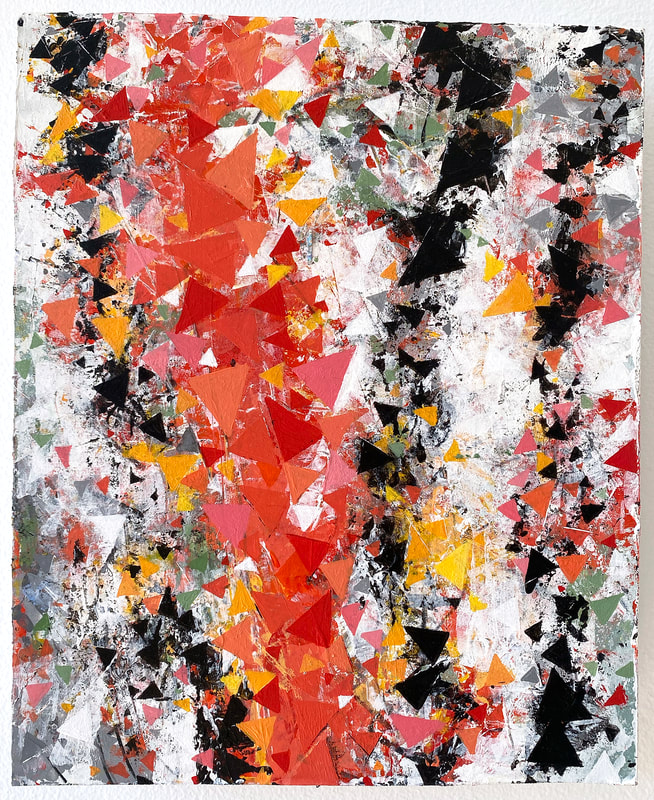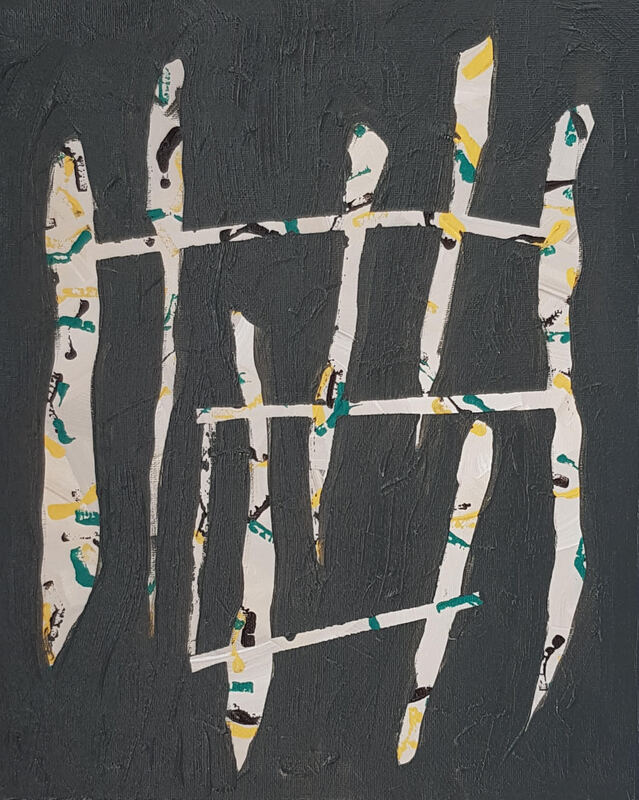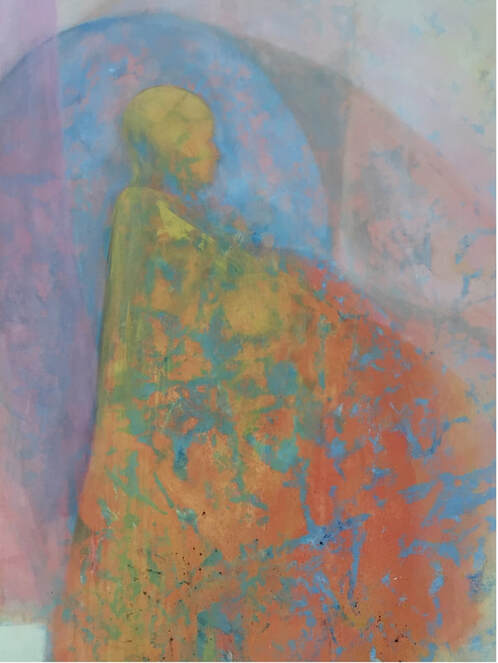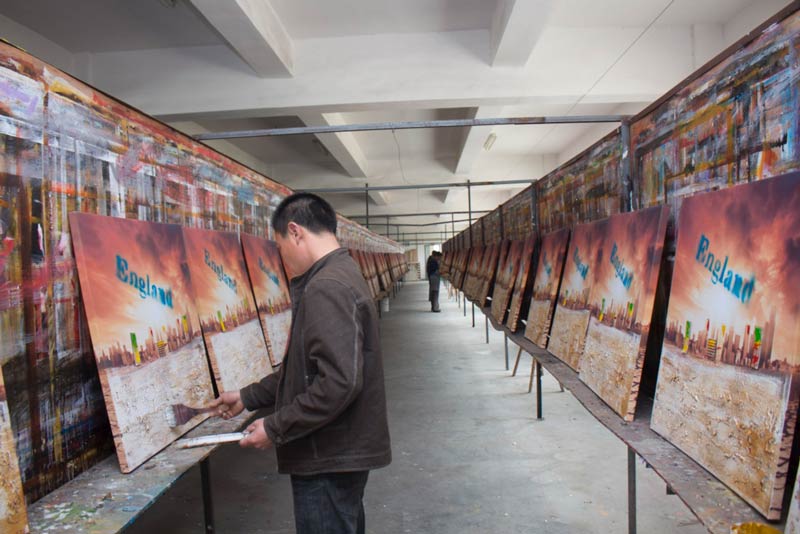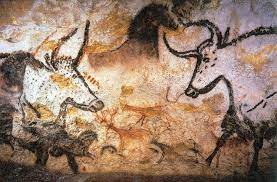|
Surface tension is a physical property of a liquid that makes its surface act like a thin elastic sheet. It is caused by the attraction of the molecules in the liquid, which try to minimize the surface area. Surface tension has many interesting effects, such as forming drops, allowing insects to walk on water, and making needles float. Human interaction is like surface tension, as we try to keep our emotions in check. We act like a thin elastic sheet, to fit in with the social groups we meet. We camouflage and hide our expressions to avoid any unwanted impressions. We minimize our surface area, to reduce the risk of hysteria, but sometimes we break the tension and reveal our true intentions. Drops of honesty form and we show our vulnerability.
Understanding the chaos of life is like surface tension. We try to make sense of the disorder and confusion, our metaphorical thin elastic sheet there to cope with the challenges we meet. We try to understand lines and writings that seem to have no meaning or timing. But sometimes we break the tension and embrace the chaos forming drops of curiosity that allow us to explore the diversity of life. Our mind creates order from scattered dots that resist our understanding. We try to look under a microscope to see the tiniest composition, we blow it up to make sense of it and find a pattern or a relation. The thin elastic sheet stretches to fit the situation, and we try to understand the dots, how they form a structure or a function, minimizing our surface area to reduce the complexity and confusion. But sometimes we break the tension and see the dots in a new dimension, forming drops of creativity and discover a new solution. According to some research, our brain connects the dots to create a subjective reality in what we see, highlighting the constructive nature of perception. Perception is the process of interpreting the sensory information that we receive from the environment. However, perception is not a passive or direct reflection of reality, but an active and constructive process that depends on our prior knowledge, expectations, and goals. We use our brain to create a subjective reality that makes sense to us, based on the available evidence and our previous experiences. The constructive nature of perception is what makes us human because it allows us to go beyond immediate sensory data and infer the hidden causes, meanings, and purposes of the world. We can use our imagination, creativity, and reasoning to form hypotheses, test predictions, and solve problems. We can also use our perception to communicate with others, express ourselves, and create art and culture. However, the constructive nature of perception also has its limitations and biases. Sometimes, we may perceive things that are not there, or miss things that are there, because of illusions, errors, or expectations. Sometimes, we may perceive things differently from others, because of individual differences, cultural influences, or emotional states. Sometimes, we may perceive things in ways that confirm our beliefs or preferences, because of motivation, confirmation bias, or cognitive dissonance. Therefore, the constructive nature of perception is both a strength and a weakness of human cognition. It enables us to adapt to complex and changing environments, but also exposes us to errors and conflicts. It makes us human, but also reminds us that we are not infallible. In the intricate tapestry of life, much like surface tension in liquids, we find a parallel in human interaction and the understanding of the chaotic world around us. Just as molecules strive to minimize their surface area, we, as social beings, often navigate our emotions with a delicate tension, concealing our true selves to fit into the molds of our social groups. Yet, occasionally, we break this tension, allowing drops of honesty and vulnerability to shine through, revealing our genuine intentions. Relying on our constructive nature of perception is a dual-edged sword. It grants us the ability to adapt to a complex and ever-changing world, yet it serves as a constant reminder of our fallibility. We must embrace this dichotomy, recognizing both our unique strength and vulnerability as we navigate the intricate web of life and understanding.
0 Comments
10/19/2023 The Interplay of Graphics, Mixed Media Painting, and the Emergence of Sculptural ElementsRead Now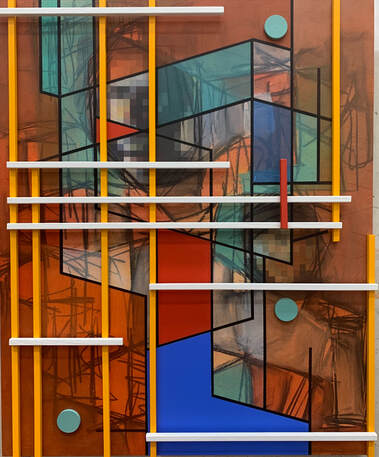 Art is constantly challenging traditional boundaries and definitions, and the intersection of different artistic genres, notably graphics, mixed media painting and sculptural elements has given rise to a fascinating realm of creativity. For some artists, such as Michael Schmeja, these genres naturally interact, blurring the lines between dimensions, and leading us to discuss the intriguing question of when does a painting transcend into a sculpture. The Fusion of Graphics and Mixed Media Painting Graphics and mixed media painting represent two distinct but closely related forms of visual expression. Graphics often involves the use of digital tools, vector-based software, and other techniques to create precise, detailed imagery. Advances in technology have played a pivotal role in this interplay, enabling artists to seamlessly blend the worlds of graphics and mixed media, providing new possibilities for experimentation and innovation. For example, Schmeja often incorporates digital elements into his surfaces, creating a juxtaposition of organic and synthetic textures. This convergence of genres allows his to leverage the precision of graphics with the tactile depth of mixed media, a fusion which allows for a diverse range of visual effects. The Transition to Three-Dimensionality One of the most intriguing aspects of Schmeja’s convergence is the emergence of sculptural elements within his paintings. He pushes the boundaries of mixed media, introducing raised lines of wood that extend beyond the confines of the surface. So, what is the transition point? When does the painting become a sculpture? Defining the precise moment of transition is subjective, often hinging on the physicality and spatial presence of the work. From tentative beginnings, Schmeja’s three-dimensional elements protrude significantly from the canvas, creating depth and transcending its two-dimensional origins. Context and Perception The context in which the artwork is presented also influences its classification. If displayed on a wall, the piece may be perceived primarily as a painting. However, if placed on a pedestal or in a space where viewers can engage with it from multiple angles, the work may take on the characteristics of a sculpture. Schmeja’s work is designed to be hung, but as his style evolves, there is the promise that his lines between painting and sculpture may continue to blur, his work growing farther out from the surface into something truly genre-defying. Layers of conflict 'City Limits’ by J. Kesin, is a series of cities in crisis, such as those affected by war, mistreatment of minorities, political and economic injustices, or negligence and their consequences. Each begins with research from photographs of fractured and fragmented places and becomes an embodiment of conflict and discord. Through the de-familiarization of the images on the canvas, and with the addition of further layers and varying degrees of transparency, the paintings become increasingly abstract, while still retaining figurative elements. Ultimately, the works strive to extend beyond the initial photographs, exploring contemporary questions and connections.
Conflict is a thread that runs continuously through human experience, yet art has a power that can express emotions and ideas words alone may struggle to convey. In the case of the now escalating conflict in Gaza, art can serve as a powerful medium to capture the multidimensionality of this intricate issue. One such painting goes beyond the humanitarian crisis; “Regression” delves into the complexities of supporting a population caught in the dual roles of oppressed and oppressor. Although this series was completed in 2021, it serves as a reflection of the intricate layers of the conflict and the current conflagration. Based on photographs of Gaza taken at various different times, each layer represents a temporal moment in its history. Vivid splashes of color depict the vibrancy of the region, starkly contrasting with the dense areas of black which create a sense of confinement and suffocation. Somber undertones weigh heavily on the canvas, a duality which reflects the dichotomy of Gaza - a place of rich history and culture, marred by the strife that plagues it. It’s oppression by its more powerful neighbor is not in dispute, but what is often forgotten is the subjugation by Hamas of its own people. Minorities such as the LGBTQ community and women are persecuted and often killed, their basic human rights nonexistent in a state that has been hijacked by fundamentalism. With the heightened emotions of war, we often see in monochrome – oppressed/oppressor – losing sight of realities. At the heart of this conflict is a clash of radicals – Islamic and Zionist – which has created a maelstrom of hate into which ordinary people have been swept. We see rhetoric that we thought had died in the ashes of the fall of Nazism. Anger prevails on all sides, with humanity the loser. The palette chosen mirrors the multifaceted nature of conflict. Pink and black dominate, the former overwhelmed by the latter. Here we see the plight of the oppressed within a subjugated community. Kesin is an artist whose work is composed of layers, and we fall into them, trying to separate one from another, each one representing rage, fear, and suffering, as well as the slow death of hope. Colors drip and run, alluding to the internal oppression that exists within Gaza; jagged, angular shapes and dark, heavy brushstrokes signify the weight of political turmoil and societal discord. These elements serve as a visual metaphor for the complexity and entanglement of the various forces at play. One of the most profound aspects of this painting is its unflinching gaze at the complexities surrounding the Gaza conflict. While undoubtedly victims of a terrible oppression, it is essential to acknowledge that the inhabitants of Gaza also play a role in the oppression of minority groups within their territory. This work challenges the notion of a clear-cut victim and oppressor, presenting a stark juxtaposition of suffering and complicity. This duality reminds us that in situations of conflict, the lines between right and wrong are often blurred, and moral certainties always give way to myriad shades of gray. “Regression” urges us to confront the uncomfortable truths that lie at the heart of Gaza. Supporting the Palestinians does not mean turning a blind eye to the often-troubling contradictions of their situation, but rather engaging with them in a way that seeks to address the root causes of their suffering. It also reminds us that in supporting them, we should also not resort to blind antisemitism. This current war, while always one simply waiting to happen, began with an attack on ordinary Israelis, on women and children, just as now it is women and children who are suffering from retaliatory strikes on Gaza. In all wars, it is the ordinary people who pay the highest price. Minority groups are victimized now as they will be victimized even after the hostilities end. Two wrongs will never make a right, and an eye for an eye, as Gandhi famously said, makes the whole world blind. In troubled times, we can turn to art to help us find balance, inclusive discussion, shared humanity and, ultimately, hope. By Elizabeth Hefty Khoury In the world of art, creativity knows no bounds. Artists often find inspiration in the most unexpected places, and it is the challenges they face that drive them to push the boundaries of their craft. One such challenge is working with unconventional materials, like gypsum boards, to create colorful and vibrant art. A Blank Slate for Artistic Expression Leftover gypsum boards, typically used for construction, might not be the first material that comes to mind when thinking about art. However, for artist Greg Bryce, the allure of their falsely smooth and durable surface is irresistible. Gypsum boards offer a unique canvas, waiting to be transformed into a masterpiece. Working with gypsum boards presents its own set of challenges. Unlike traditional canvases, they are rigid and unforgiving. The surface is not as porous, making it necessary to adapt one's techniques. Artists must be patient and innovative, finding new ways to make the colors adhere and express their vision. The process can be frustrating, but it's the pursuit of the extraordinary that keeps artists going. In a similar vein, a teacher often faces a class full of students, each with their unique backgrounds, abilities, and temperaments. Just as gypsum boards pose unique challenges for artists, the diversity of students can be both a source of inspiration and a challenge for teachers. Each child is a blank slate, waiting to be molded, and it's the teacher's role to guide them towards becoming better individuals and imparting knowledge. The Creative Process: Transforming Gypsum Boards into Art To transform gypsum boards into a work of art, Bryce began by prepping the surface. This involve sanding, priming, and creating a base layer. The process requires meticulous attention to detail, just as teachers must understand each student's needs and tailor their approach accordingly. Once the surface is prepared, Bryce´s vision takes shape. The selection of colors, textures, and techniques becomes crucial. He has a palette of colors made with various mediums to make the colors vibrant and to achieve the desired texture. He employs unconventional tools like palette knives, sponges, or even their own hands to create unique effects. In the same way, teachers adapt their teaching methods to suit the needs and learning styles of their students. They must experiment with various approaches to ensure that the educational experience is engaging and effective. The next step in the artistic process is to add layers of colors and textures. This stage can be a delicate dance, as each layer influences the final result. Artists must know when to layer, blend, or let certain elements shine through, much like teachers must balance the curriculum, allowing students to explore their interests while ensuring they cover the necessary topics. Bryce also faces the challenge of making the colors adhere to the gypsum board. Traditional canvases readily absorb paint, but gypsum boards require special care. Acrylic gels, glazing, or other mediums are used to improve adhesion. In a similar vein, teachers must find ways to ensure that their lessons stick in the minds of their students. This requires creativity in teaching methods, interactive activities, and the use of real-life examples to facilitate understanding and retention. Mistakes and Adaptation: A Learning Curve for Artists and Teachers Throughout the creative process, Bryce encounters mistakes and setbacks. The beauty of these mishaps is that they often lead to unexpected discoveries. Artists learn to adapt, embracing imperfections and incorporating them into their work. These mistakes become part of the story the artwork tells. Similarly, teachers face challenges in the classroom, and students make mistakes as they learn. The teacher's role is to guide students through these moments, helping them learn from their errors and grow. Bryce also experiences moments of frustration when their vision doesn't align with the reality on the gypsum board. These moments test their patience and determination. Yet, it is in the face of adversity that their creativity often shines the brightest. Teachers, too, face challenges when students struggle or resist learning. The teacher's dedication to their craft is tested, but it is through these challenges that they have the opportunity to truly make a difference in a student's life. The Finished Masterpiece and Educated Minds After countless hours of dedication and perseverance, Bryce unveils his finished masterpieces. The final result often leaves viewers in awe of the transformation that has taken place. It is a testament to the artist's ability to turn adversity into a stunning display of creativity and resilience. In a parallel manner, a teacher's role is to mold students into well-rounded individuals who are not only educated but also better human beings. Through their guidance, patience, and innovative teaching methods, they shape the minds of young learners. Just as artists breathe life into a board, teachers inspire and empower students to realize their potential and become valuable members of society. In conclusion, Bryce's challenge of working with unconventional materials, like gypsum boards, serves as a metaphor for a teacher's experience of molding young minds. Both endeavors require adaptability, patience, and a willingness to learn from mistakes. They demonstrate the transformative power of creativity and education, reminding us that even in the face of adversity, beauty and growth can emerge. Whether creating art or nurturing young minds, the process is a testament to the human spirit's resilience and capacity for boundless imagination. To finally present them, both children to the world where artwork become a living thing as a mature human child becomes a member of society. Abstract art, with its diverse array of forms, colors, and textures, can captivate with its enigmatic although not always conventional beauty. At the heart of many abstract compositions lies a technique that adds depth and resonance to the work: layering. This process involves the application of multiple layers of paint, texture, or other mediums to create a multidimensional visual experience, each layer contributing its own significance, allowing the artist to convey complex emotions, concepts, and narratives. In this exploration, we delve into the world of layering in abstract art, unraveling the meanings and resonances embedded within each stratum. The Initial Gestures The first layer in an abstract artwork is a foundation, embodying the artist’s initial impulses and gestures. A canvas of possibilities, it is here that the artist's intentions are loosely sketched. This layer often reflects raw emotions, the artist's state of mind, or a particular moment in time. It might contain spontaneous brushstrokes, splatters, or even deliberate markings, setting the stage for what is to come. Emotional Undercurrents Every brushstroke, drip, or mark in the initial layer carries a certain emotional charge. Whether the fervor of passion, the serenity of contemplation, or the turbulence of unrest, these emotions permeate the canvas, to create a visual symphony of feelings. Ideally, viewers find themselves resonating with these underlying emotions, which evoke a personal connection to the artwork. Building Complexity As subsequent layers are added, the artwork undergoes a transformation, gaining complexity and depth. This phase involves a meticulous interplay of colors, textures, and forms, each layer building upon the last. The artist may experiment with various techniques, such as impasto, glazing, or collage, to achieve the desired effect. Narrative Development Each layer contributes to the narrative of the artwork, introducing new elements and perspectives. They are a story unfolding, each layer revealing a new chapter or dimension, and may introduce contrast, harmony, or discord, inviting viewers to interpret the evolving narrative in their own unique way. Concealing and Revealing Layering in abstract art allows for a delicate balance between concealment and revelation. Some layers may obscure previous elements, hinting at hidden depths or concealed meanings. Others may expose glimpses of what lies beneath, creating an intriguing interplay of transparency and opacity. This duality invites viewers to engage with the artwork on multiple levels, discovering new nuances with each viewing. Symbolism and Metaphor Certain layers may incorporate symbolic elements or metaphors, adding layers of meaning beyond the visual surface. Symbols, whether abstract or representational, can evoke universal themes or personal experiences. They serve as a bridge between the tangible and the abstract, inviting viewers to explore the deeper, metaphorical layers of the artwork. Harmonizing the Layers The final stages of layering in abstract art involve a careful consideration of balance and harmony. The artist may refine, blend, or juxtapose elements to achieve a cohesive composition. This process requires a discerning eye and an intuitive understanding of the interplay between colors, forms, and textures. Unity and Wholeness In the culmination of layering, the disparate elements coalesce into a unified whole. The layers harmonize, creating a visual symphony that resonates with a sense of completeness. This final stage invites viewers to experience the artwork as a holistic entity, appreciating the interdependence of its constituent parts. Layering in abstract art is a testament to the artist's ability to convey depth, meaning, and resonance through a nuanced interplay of elements. Each layer serves as a chapter in the artwork's narrative, inviting viewers to embark on a journey of interpretation and discovery. As viewers engage with the layers, they are offered a glimpse into the artist's process, emotions, and creative vision, forging a profound connection between creator and observer. In this intricate dance of concealment and revelation, layering transforms abstract art into a rich tapestry of meaning and resonance. 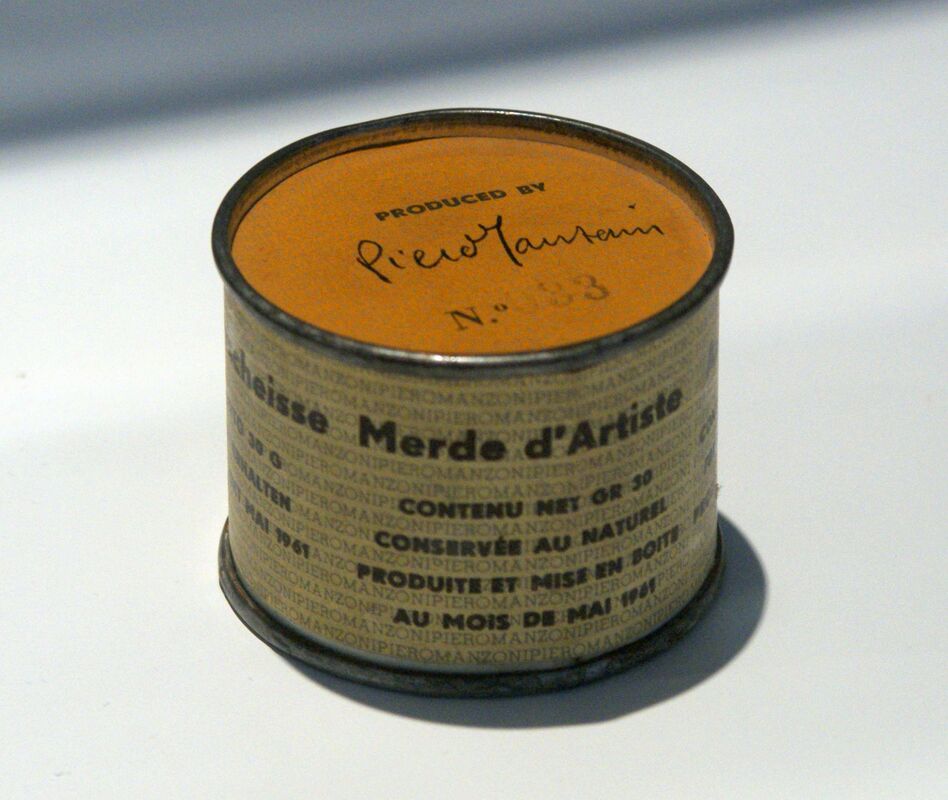 Merda d'artista by Piero Manzoni Merda d'artista by Piero Manzoni Dear readers, welcome to the circus that is the contemporary art world! Grab your popcorn, because we're about to embark on a wild ride through the death of logic in this realm of creativity and chaos. Ah, the art world, where logic goes to die, and pretentiousness thrives. Logic, the noble faculty of reason and rationality, a once respected and valued principle in the art world. Artists used logic to create works that were coherent, meaningful, and beautiful. They followed rules of composition, perspective, harmony, and proportion, seeking to express their ideas and emotions in clear and understandable ways. They aimed to please both the eye and the mind of the viewer. But alas, logic’s reign was not to last. In the late 19th and early 20th centuries, a series of rebellions and revolutions shook the foundations of the art world. Artists began to question and challenge the established norms and conventions of art. They experimented with new forms, styles, techniques, and materials. They explored new themes, concepts, and philosophies. They rejected realism, naturalism, and representation, embracing abstraction, expressionism, and surrealism. Some of these innovations were indeed brilliant and groundbreaking, opening up new possibilities and horizons for artistic expression. They enriched the diversity and complexity of the art world. They stimulated the imagination and creativity of both artists and viewers. Take for example, Salvador Dali. In 1929, Dali painted “The Persistence of Memory”, a surreal landscape featuring melting clocks, ants, and a distorted face. He said that he was inspired by a dream and by a Camembert cheese melting in the sun. He also said that he wanted to depict the relativity of time and space in a Freudian way. The painting is widely regarded as one of the masterpieces of surrealism and one of the most recognizable artworks in history. But some of these innovations were also absurd and ridiculous. They pushed the boundaries of art to the point of absurdity and meaninglessness. They abandoned logic and replaced it with nonsense, randomness, and absurdity. They created works that sought to challenge the conventions of the art world, yet were often incomprehensible, illogical, and ugly to many viewers. Naturally, the art world embraces the absurd and one could argue that the absurd is a statement that, paradoxically, is logical. But we are venturing into the realms that, to the ordinary viewer, seem to defy logic. Let’s start with a classic masterpiece, a banana duct-taped to a wall. Titled ‘The Comedian’, this work by Maurizio Cattelan caused a stir when displayed at Miami’s Art Basel. As a statement on the meaning of ordinary objects changing depending on context, we can maybe appreciate it on some level. Cattelan is an artist whose work often critiques art and capitalism. Witness his piece, ‘America’, when he installed a solid gold toilet in a public restroom at the Guggenheim Museum in New York and invited visitors to use it as a functional toilet. He said that he wanted to make a statement about wealth inequality and democracy in America. The toilet was stolen from an exhibition at Blenheim Palace in England in 2019, which one could argue is the ultimate statement on such notions. But these pieces are also part of what they purport to criticize. Ultimately, the gallery and the artist benefit from those who buy these works, and instead of laughing at, they are laughing along with the people they are mocking. From the toilet to its contents. In 1961, Piero Manzoni canned his own feces in 90 tin cans, each weighing 30 grams. He labeled them “Artist’s Shit” and priced them according to their weight in gold. He said that he wanted to mock the art market and challenge the notion of art as something sacred and valuable. The cans were sold to collectors and museums, and in 2015, tin 54 sold for £182, 500. Critics hailed it as " a joke, a parody of the art market, and a critique of consumerism and the waste it generates." Yet, did the buyers get the joke or did it simply become a parody of itself? And then there's the ever-entertaining game of "Guess What This Art Means." You stand before a giant, three-story sculpture of a rusty spoon with a fork sticking out of it, and you're told it's a commentary on the futility of utensils in the modern world. Of course! Silly me, I've been using forks and spoons all wrong. They were meant for profound philosophical reflection, not for eating spaghetti! Too many artists are guilty of creating works whose meaning they deign to even articulate. Some are brilliant, some are crap, but where is the line? But the real masterpiece of illogical art has to be performance art. You know, where someone dresses up in a chicken suit, squawks for an hour, and claims it's a groundbreaking exploration of the human condition. Bravo! You've certainly opened my eyes to the deep, existential crisis that comes with being a chicken. Now, of course, some performance art is profound and moving. It touches deep into the recesses of our being. But it is also a genre that for many epitomizes the illogicality of the art world. Of course, at the root of all this is the art market itself. The art world has always been guilty of being self absorbed and shallow. It's a place where rich collectors and speculators spend millions on pieces that most people wouldn't even use as a coaster. Why? Because they are told that it is worth money, often by the very artists who are mocking them. Hey, as long as it's considered an "investment," who cares if it looks like a toddler's finger painting? Are these artists complicit or truly revolutionary. It is subjective, but the consensus by many ordinary viewers is the former. In conclusion, my dear readers, the death of logic in the art world is a spectacle to behold. It's a world where anything can be art, and everything can be profound, as long as you have the right amount of audacity and a generous dose of pretentiousness. So, the next time you find yourself in a gallery staring at a pile of bricks and wondering if you're missing something, just remember you're not alone. The art world lost its marbles a long time ago, and it's been thriving ever since. Cheers to the wonderfully illogical world of art! 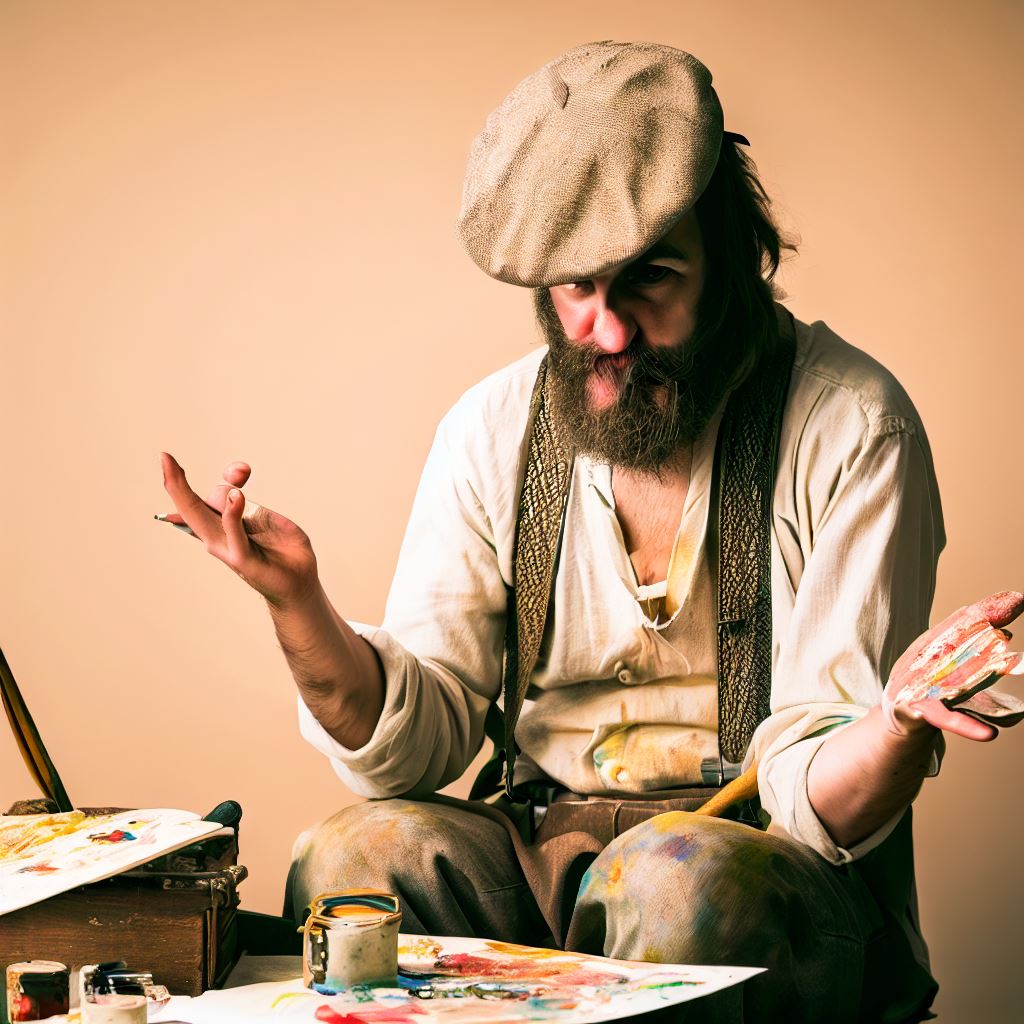 So, you want to be a famous artist! Often, we can find the path to success already carved out by those who went before so let us look at some artists who have achieved greatness and see how they did it. Comparing the biographies of the 10 most famous artists painters of the last century or two is not an easy task. They all had different lifestyles, personal relationships, and life experiences that influenced their artistic development. However, we will try to provide some general observations based on some commonly known information. Notable among these artists is that they all moved to Paris at some point in their careers. Paris was the epicenter of the art scene in the early 20th century. Pablo Picasso, Henri Matisse, Marc Chagall, and Georgia O’Keeffe all settled in Paris for several years and interacted with other influential artists and writers. Andy Warhol and Jackson Pollock visited Paris briefly but were more influenced by the American art scene in New York. Vincent van Gogh and Frida Kahlo also traveled to Paris but did not stay long. Salvador Dali and Henri Matisse were also artists who lived and worked in the French capital. Another commonality is that they all faced some challenges or difficulties in their personal lives, such as physical or mental illness, poverty, war, political oppression, or marital problems. Vincent van Gogh suffered from depression and cut off his own ear before committing suicide. Frida Kahlo had a tumultuous marriage with Diego Rivera and endured multiple health issues due to a bus accident and polio. Jackson Pollock struggled with alcoholism and died in a car crash. Andy Warhol was shot by a radical feminist and survived with serious injuries. Pablo Picasso had several affairs and divorces and was accused of mistreating his women. Salvador Dali was exiled from Spain for his political views and later became a recluse. Marc Chagall fled from Nazi persecution and lost his wife to a viral infection. Georgia O’Keeffe faced sexism and criticism for her erotic paintings and later lost her eyesight. Henri Matisse underwent several surgeries and spent his last years in a wheelchair. These hardships often influenced their artistic expression and style, as they used art as a way of coping or escaping from reality. A third similarity is that, throughout their careers, they all experimented with different styles, techniques, and media, often creating innovative and original works that challenged the conventions of the time. They were influenced by various artistic movements, such as Cubism, Fauvism, Surrealism, Abstract Expressionism, Pop Art, and Modernism, but also developed their own personal vision and languages. They used not only paint and canvas, but also collage, sculpture, photography, film, printmaking, ceramics, and cutouts to create their artworks. They explored various themes, such as nature, urban life, religion, mythology, sexuality, identity, politics, and emotions. They often combined elements from different cultures, traditions, and sources of inspiration. They created works that were both personal and universal, expressing their individual feelings and experiences as well as reflecting the social and historical context of their times. Of course, there is no easy formula for artistic success. Fame is an intangible thing, sought by many and attained by few. However, if we want to take some tips from the greats then innovative experimentation is a good place to start. A difficult upbringing, or personal life, or even a childhood illness or two is a useful addition and, if nothing else works, then move to Paris. Echo of a Silent Mind is an abstract painting by Moksanada, an artist who explores the concept of ‘thin places’ in his artworks. ‘Thin places’ are places where the veil between the ordinary and the extraordinary is thin, and where one encounters the beauty and mystery of life. Moksanada uses colors, shapes, and textures to express his personal vision and experience of reality.
The painting depicts a person’s silhouette in orange and blue colors, against a background of pink, blue and purple hues. The person’s head is visible and is in a yellow color. The painting is done in a loose, impressionistic style with visible brushstrokes, creating an overall mood which is dreamy and ethereal. The painting can be interpreted in different ways, depending on the viewer’s perspective and imagination. However, one possible interpretation is that the painting represents the artist’s inner self, his silent mind, that echoes his thoughts and feelings. It is a reflection of his identity, his emotions, and his spirituality. The orange and blue colors of the silhouette suggest a contrast between warmth and coolness, passion and calmness, fire and water. The orange color also implies a sense of vitality, creativity, and courage. The blue color also conveys a sense of depth, tranquility, and wisdom. The contrast between these two colors creates a balance and harmony in the painting. The yellow color of the head indicates a source of light, energy, and joy. It also symbolizes the intellect, the rationality and the logic of the artist. The yellow color also contrasts with the other colors in the painting, making them appear more vibrant and intense. The yellow color also represents the artist’s optimism and hope for the future. The background colors of pink, blue and purple create a sense of space, atmosphere, and mood in the painting. The pink color evokes a feeling of love, romance, and tenderness. The blue color also invokes a feeling of peace, serenity, and spirituality. The purple color also suggests a sense of mystery, magic, and intuition. The background colors also reflect the artist’s emotions and states of mind. The impressionistic style of the painting shows the artist’s spontaneity and experimentation with different techniques and materials. The visible brushstrokes add a dimension of texture and movement to the painting. They also reveal the artist’s personality and expression. The dreamlike atmosphere evokes a sense of wonder and awe in the viewer. It also invites the viewer to enter the artist’s world of ‘thin places’, where reality is more than what it seems. The painting is a work of art that echoes the silent mind of the artist. Echo of a Silent Mind by Moksanada is an expression his personal vision and experience of reality. It uses colors, shapes, and textures to convey his identity, emotions, and spirituality. It also reflects his concept of ‘thin places’, where one can encounter the beauty and mystery of life. The painting is a manifestation of his inner self, his silent mind, that echoes his thoughts and feelings. Mass Produced Art Vs Original Artwork
Mass-produced art refers to artworks that are produced in larger quantities, often using various mechanical or digital reproduction techniques. These works are typically more accessible and affordable than one-of-a-kind, original pieces of art. Here are some advantages and disadvantages of mass-produced art and their effect on the art market: Advantages:
Lascaux cave is one of the most famous and impressive examples of prehistoric art in the world. Discovered on 12th of September 1940, and located in southwestern France, near the village of Montignac, the cave contains over 600 paintings of animals, humans, and abstract symbols that date back to around 17,000 years ago. The paintings are remarkable for their realism, detail, and variety, as well as their use of perspective, shading, and color. They reveal the artistic skills and imagination of the ancient people who created them, and their knowledge and appreciation of the natural world. But why did they paint these images? What was the purpose and meaning of their art? These questions have long fascinated and puzzled researchers and visitors. There is no definitive answer, but some possible explanations include:
Similarities:
Art is important because it connects us to ourselves, to each other, and to the world. It allows us to express ourselves in ways that words cannot. It helps us to understand ourselves and others better. It enriches our lives with beauty and meaning. It challenges us to think critically and creatively. It empowers us to change ourselves and our society. Lascaux cave is a testament to the power of art. It is a reminder that art is not a luxury or a hobby, but a necessity and a right for all human beings. It is a treasure that belongs to all humanity and that we must preserve and protect for future generations. |
Details
about bloomWe are a European/Lebanese run art space in Valencia, Spain. Archives
May 2024
COPYRIGHT NOTICE© Bloom Gallery. Unauthorized use and/or duplication of this material without express and written permission from this site’s author and/or owner is strictly prohibited. Small excerpts and links may be used, provided that full and clear credit is given to Bloom Gallery with appropriate and specific direction to the original content.
|
